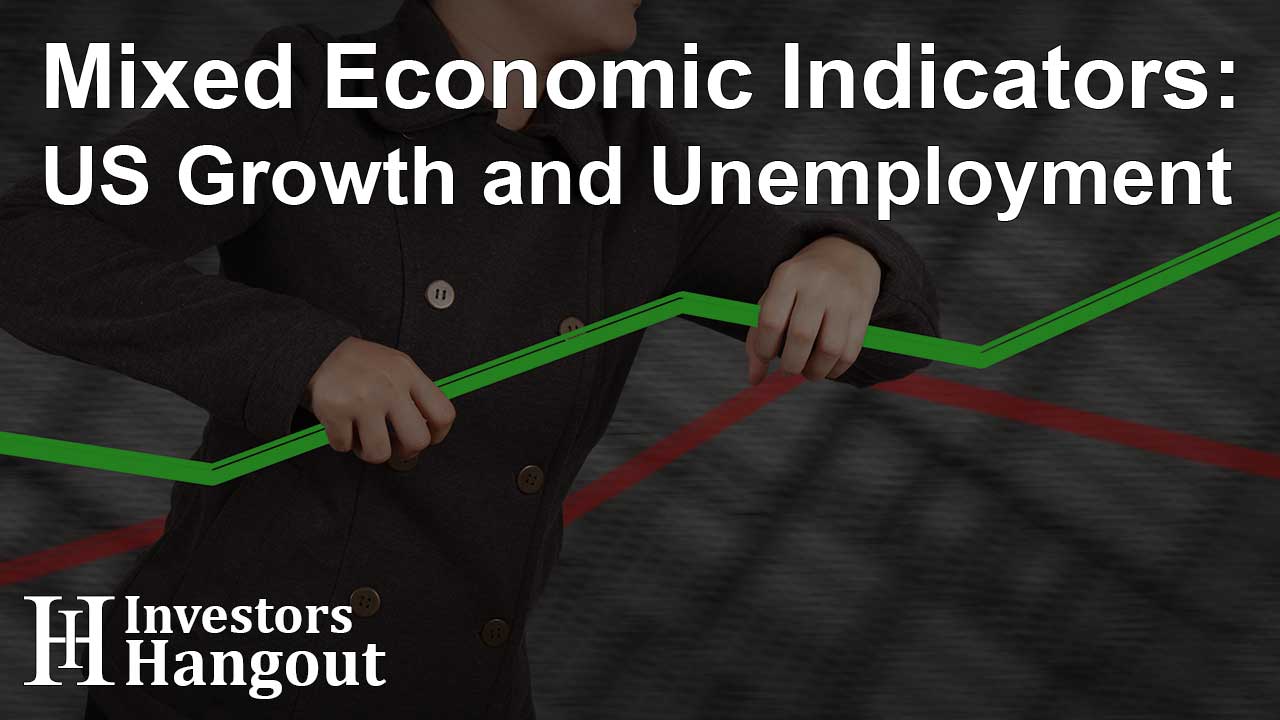Mixed Economic Indicators: US Growth and Unemployment

US Recession Concerns Resurface Amid Weak Employment Report
After a poor employment report, US recession worries have surged. The post-pandemic high in the jobless rate caused anxiety about a recession about to strike. This development calls into question the Federal Reserve's target of a gentle economic landing. Negative reaction of stock markets indicates that interest rates might have been maintained high for too long. More gloomy views are substituting for the story of a balanced economic outcome. Investors and economists are kept especially alert for indicators of an economic crisis. Alert bells have been set off by the unexpected increase in unemployment. Such patterns usually point to more general economic problems. The weakness of the job market stands out among other economic statistics. Nowadays, analysts are reevaluating their forecasts for the next years. The employment survey has turned the emphasis to possible recession hazards.
Current State of the US Economy: A Mixed Bag of Indicators
The US economy shows a complicated picture with conflicting indicators. Although some statistics show continuous increase, others imply possible problems ahead. Growth in GDP has stayed constant, avoiding notable falls. GDP rose annuallyized at 2.8% in the second quarter. Pre-pandemic averages line up with this expansion rate. One important indicator the Fed tracks, private sector demand, stayed constant. Though these encouraging indicators, questions still exist. Troubling are rising unemployment and slow job creation. The mixed data muddies economic prediction. Regarding the possibility of a recession, economists vary in opinion. The matter calls for close observation of several economic statistics. The general state of the economy stays unknown.
GDP Growth and Private Sector Demand Remain Steady
Resilience in US GDP growth has kept constant rates. GDP growth in the second quarter came on annualized basis at 2.8%. This pace corresponds with the average increase observed in past years. Demand of the private sector also stayed strong. Second quarter final sales to private domestic buyers came at 2.6%. This statistic fits the past year and a half average. Such consistency implies underlying economic strength. Still, this is only one aspect of the picture. Other signs reveal possible flaws. Though not definite, the consistent GDP increase is encouraging. Analyzes underline the need of observing changes in economic trends. The state of the economy depends critically on ongoing stability in these indices.
Service Sector Activity Shows Signs of Expansion
US service sector activity is beginning to show encouraging trends. Services activity index of the Institute of Supply Management entered expansion zone. Employment in the sector rebounded along with new orders. The measure of services activity from S&P Global also stayed rather robust. July saw it close to the highest level in more than two years. Two-thirds of US economic activity is found in this sector. The development in services points to ongoing economic expansion. Still, the general economic backdrop is dubious. The strength of the service industry contrasts with slow employment increase. About this industry, analysts are gently hopeful. The performance of it will be vital for the whole country. Constant service expansion could help to balance other economic difficulties.
Inflation Trends and the Federal Reserve's Interest Rate Dilemma
Trends in inflation have complicated Federal Reserve interest rate decisions. Rising rates by the Fed in response to inflation's explosive surge in 2021 and 2022 This year started with unanticipated rise in inflation. These trends caused the Fed to stop intending rate cuts. More recent statistics indicates inflation almost reaching the Fed's 2% target. This could make rate cuts possible not too distant. Timing is crucial, though. Investors worry the Fed moved too slowly in turning the emphasis from inflation to jobs. It is delicate to strike the mix between lowering inflation and boosting job creation. The direction of the economy will be much changed by Fed decisions. Making these decisions calls for accurate inflation data. The Fed has to negotiate these tendencies carefully to stay clear of recession threats.
Rising Unemployment Rates: Implications and Historical Context
Rising unemployment rates in the US have generated cause for concern. The employmentless rate increased for the fourth straight month in July. Highest since October 2021, it came to 4.3%. For economic stability, this trend worries us. Rising unemployment historically usually comes before recessions. According to the Sahm rule, a recession follows a half-percent point change in the three-month average unemployment rate. This rule has been a consistent forerunner. Right now, trends almost seem to be triggering this rule. Watching closely are unemployment rates are economists. To steady the employment market, the Fed could have to lower interest rates. Growing unemployment affects consumer confidence and expenditure. The economic health depends on addressing this trend.
Household Debt and Delinquency Rates: An Emerging Concern
US household debt and delinquency rates show indications of strain. In the first quarter the delinquency percentage climbed to 3.2%. At the end of last year, this was 3.1% instead. The trend is alarming even if the level is still below pre-pandemic. Particularly younger and lower-income groups, credit-card users are struggling. Their rates of delinquency have jumped noticeably. This could have more general economic effects. Low-income households' strains can affect the whole economy. Second-quarter data of the New York Fed will be soon available. Analyzes hope more clarity on debt trends. Understanding economic situation depends on knowing household debt. Early addressing of these concerns helps to avoid more general economic crises.
Challenges Ahead: Fiscal and Monetary Policy Responses to Potential Recession
The US struggles in reacting to possible recession threats. Aggressive fiscal and financial reactions were part of the 2020 pandemic recession. Mass spending programs were carried out and interest rates were dropped. The circumstances differ this time. With its much higher policy rate, the Fed gives more flexibility for rate reductions. High government debt, meanwhile, could restrict budgetary reactions. Strong stimulus policies could prove difficult for next administrations to execute. Furthermore less severe than in 2020 is the economic background. Any recession today is probably going to be milder. Still, wise policy decisions are absolutely vital. Government and the Fed have to strike a balance between debt management and support for expansion. Stability of the economy depends critically on effective answers.
About The Author
Contact Owen Jenkins privately here. Or send an email with ATTN: Owen Jenkins as the subject to contact@investorshangout.com.
About Investors Hangout
Investors Hangout is a leading online stock forum for financial discussion and learning, offering a wide range of free tools and resources. It draws in traders of all levels, who exchange market knowledge, investigate trading tactics, and keep an eye on industry developments in real time. Featuring financial articles, stock message boards, quotes, charts, company profiles, and live news updates. Through cooperative learning and a wealth of informational resources, it helps users from novices creating their first portfolios to experts honing their techniques. Join Investors Hangout today: https://investorshangout.com/
